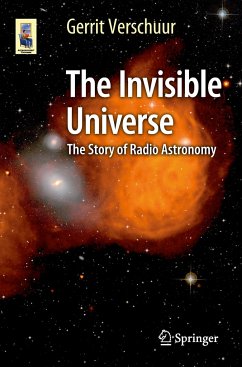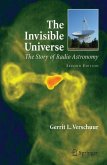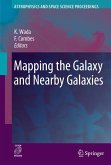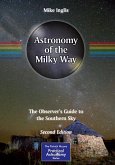Hidden from human view, accessible only to sensitive receivers attached to huge radio telescopes, the invisible universe beyond our senses continues to fascinate and intrigue our imaginations. Closer to home, in the Milky Way galaxy, radio astronomers listen patiently to the ticking of pulsars that tell of star death and states of matter of awesome densities. All of this happens out there in the universe hidden from our eyes, even when aided by the Hubble Space Telescope.
This is the story of radio astronomy, of how radio waves are generated by stars, supernova, quasars, colliding galaxies and by the very beginnings of the universe itself. The author discusses what radio astronomers are doing in the New Mexico desert, in a remote valley in Puerto Rico, and in the green Pocahontas Valley in West Virginia, as well as dozens of other remote sites around the world. With each of these observatories, the scientists collect and analyze their data, "listening" to the radio signals from space in order to learn what, or perhaps who, is out there as well. The author specifically highlights enormous changes that have occurred in the field over the past 50 years, including the political reality of radio astronomy and what that could mean for the future.
This is the story of radio astronomy, of how radio waves are generated by stars, supernova, quasars, colliding galaxies and by the very beginnings of the universe itself. The author discusses what radio astronomers are doing in the New Mexico desert, in a remote valley in Puerto Rico, and in the green Pocahontas Valley in West Virginia, as well as dozens of other remote sites around the world. With each of these observatories, the scientists collect and analyze their data, "listening" to the radio signals from space in order to learn what, or perhaps who, is out there as well. The author specifically highlights enormous changes that have occurred in the field over the past 50 years, including the political reality of radio astronomy and what that could mean for the future.
"This is the third edition of Verschuur's very readable history of radio astronomy. ... Verschuur (Univ. of Memphis) traces the development of radio astronomy from its birth in 1932 through the technological improvements made based on discoveries during WW II, to large government supported projects, and up to the modern day. ... The well-done color illustrations are abundant, and the appendix of technical terms is useful. Summing Up: Recommended. General readers and lower-level undergraduates." (M.-K. Hemenway, Choice, Vol. 52 (12), August, 2015)
Aus den Rezensionen zur 2. Auflage: "... von Radiobeobachtungen im tiefen Universum wird in dem sehr unterhaltsamen Band von Gerrit Verschuur beschrieben. Das Buch berichtet dabei sehr anschaulich und lebendig über die Reichhaltigkeit der Beobachtungen und die neuen astronomischen Erkenntnisse ... Es ist ein Buch geworden, das mir viel Vergnügen beim Lesen bereitete. Ich möchte es einem breiten astronomisch interessierten Publikum empfehlen, denn die Darstellung erweitert unseren Blick in die Sterne um eine unsichtbare Dimension, die der Radiobereich mit sich bringt." (Volker Müller, in: Sterne und Weltraum, 2008, Issue 6, S. 122)








